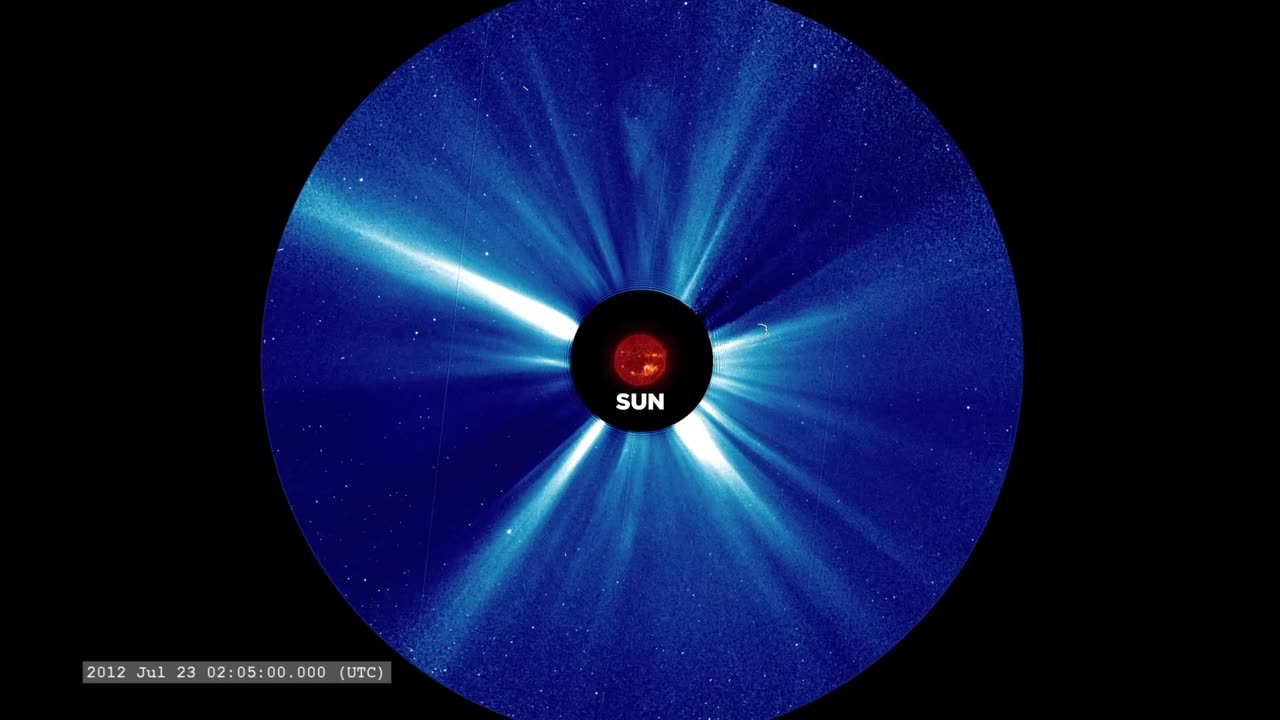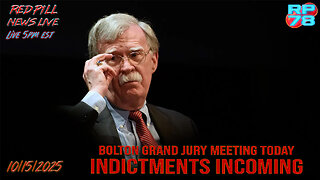Premium Only Content

How NASA Will Protect Astronauts From Space Radiation
How NASA Will Protect Astronauts From Space Radiation How NASA Will Protect Astronauts From Space Radiation How NASA Will Protect Astronauts From Space Radiation How NASA Will Protect Astronauts From Space Radiation How NASA Will Protect Astronauts From Space Radiation How NASA Will Protect Astronauts From Space Radiation How NASA Will Protect Astronauts From Space Radiation How NASA Will Protect Astronauts From Space Radiation How NASA Will Protect Astronauts From Space Radiation How NASA Will Protect Astronauts From Space Radiation How NASA Will Protect Astronauts From Space Radiation How NASA Will Protect Astronauts From Space Radiation How NASA Will Protect Astronauts From Space Radiation How NASA Will Protect Astronauts From Space Radiation How NASA Will Protect Astronauts From Space Radiation How NASA Will Protect Astronauts From Space Radiation How NASA Will Protect Astronauts From Space Radiation How NASA Will Protect Astronauts From Space Radiation How NASA Will Protect Astronauts From Space Radiation How NASA Will Protect Astronauts From Space Radiation How NASA Will Protect Astronauts From Space Radiation How NASA Will Protect Astronauts From Space Radiation How NASA Will Protect Astronauts From Space Radiation How NASA Will Protect Astronauts From Space Radiation How NASA Will Protect Astronauts From Space Radiation How NASA Will Protect Astronauts From Space Radiation August 1972, as NASA scientist Ian Richardson remembers it, was hot. In Surrey, England, where he grew up, the fields were brown and dry, and people tried to stay out of the Sun, indoors and televisions on. But for several days that month, his TV picture kept breaking up. “Do not adjust your set,” he recalls the BBC announcing. “Heat isn’t causing the interference. It’s sunspots.” The same sunspots that disrupted the television signals led to enormous solar flares — powerful bursts of radiation from the Sun — Aug. 4-7 that year. Between the Apollo 16 and 17 missions, the solar eruptions were a near miss for lunar explorers. Had they been in orbit or on the Moon’s surface, they would have sustained dangerous levels of solar radiation sparked by the eruptions. Today, the Apollo-era flares serve as a reminder of the threat of radiation exposure for technology and astronauts in space. Understanding and predicting solar eruptions is crucial for safe space exploration. Almost 50 years since those 1972 storms, the data, technology and resources available to NASA have improved, enabling advancements towards space weather forecasts and astronaut protection — key to NASA’s Artemis program to return astronauts to the Moon. Music credits: “Boreal Moment” by Benoit Scarwell [SACEM]; “Sensory Questioning”, “Natural Time Cycles”, “Emerging Designer”, and “Experimental Design” by Laurent Dury [SACEM]; “Superluminal” by Lee Groves [PRS], Peter George Marett [PRS] from Killer Tracks Read more: https://www.nasa.gov/feature/goddard/2019/how-nasa-protects-astronauts-from-space-radiation-at-moon-mars-solar-cosmic-rays This video is public domain and along with other supporting visualizations can be downloaded from the Scientific Visualization Studio at: http://svs.gsfc.nasa.gov/13275 If you liked this video, subscribe to the NASA Goddard YouTube channel: http://www.youtube.com/NASAExplorer Follow NASA’s Goddard Space Flight Center · Instagram http://www.instagram.com/nasagoddard · Twitter http://twitter.com/NASAGoddard · Twitter http://twitter.com/NASAGoddardPix · Facebook: http://www.facebook.com/NASA.GSFC · Flickr http://www.flickr.com/photos/gsfc
August 1972, as NASA scientist Ian Richardson remembers it, was hot. In Surrey, England, where he grew up, the fields were brown and dry, and people tried to stay out of the Sun, indoors and televisions on. But for several days that month, his TV picture kept breaking up. “Do not adjust your set,” he recalls the BBC announcing. “Heat isn’t causing the interference. It’s sunspots.” The same sunspots that disrupted the television signals led to enormous solar flares — powerful bursts of radiation from the Sun — Aug. 4-7 that year. Between the Apollo 16 and 17 missions, the solar eruptions were a near miss for lunar explorers. Had they been in orbit or on the Moon’s surface, they would have sustained dangerous levels of solar radiation sparked by the eruptions. Today, the Apollo-era flares serve as a reminder of the threat of radiation exposure for technology and astronauts in space. Understanding and predicting solar eruptions is crucial for safe space exploration. Almost 50 years since those 1972 storms, the data, technology and resources available to NASA have improved, enabling advancements towards space weather forecasts and astronaut protection — key to NASA’s Artemis program to return astronauts to the Moon. Music credits: “Boreal Moment” by Benoit Scarwell [SACEM]; “Sensory Questioning”, “Natural Time Cycles”, “Emerging Designer”, and “Experimental Design” by Laurent Dury [SACEM]; “Superluminal” by Lee Groves [PRS], Peter George Marett [PRS] from Killer Tracks Read more: https://www.nasa.gov/feature/goddard/2019/how-nasa-protects-astronauts-from-space-radiation-at-moon-mars-solar-cosmic-rays This video is public domain and along with other supporting visualizations can be downloaded from the Scientific Visualization Studio at: http://svs.gsfc.nasa.gov/13275 If you liked this video, subscribe to the NASA Goddard YouTube channel: http://www.youtube.com/NASAExplorer Follow NASA’s Goddard Space Flight Center · Instagram http://www.instagram.com/nasagoddard · Twitter http://twitter.com/NASAGoddard · Twitter http://twitter.com/NASAGoddardPix · Facebook: http://www.facebook.com/NASA.GSFC · Flickr http://www.flickr.com/photos/gsfc
August 1972, as NASA scientist Ian Richardson remembers it, was hot. In Surrey, England, where he grew up, the fields were brown and dry, and people tried to stay out of the Sun, indoors and televisions on. But for several days that month, his TV picture kept breaking up. “Do not adjust your set,” he recalls the BBC announcing. “Heat isn’t causing the interference. It’s sunspots.” The same sunspots that disrupted the television signals led to enormous solar flares — powerful bursts of radiation from the Sun — Aug. 4-7 that year. Between the Apollo 16 and 17 missions, the solar eruptions were a near miss for lunar explorers. Had they been in orbit or on the Moon’s surface, they would have sustained dangerous levels of solar radiation sparked by the eruptions. Today, the Apollo-era flares serve as a reminder of the threat of radiation exposure for technology and astronauts in space. Understanding and predicting solar eruptions is crucial for safe space exploration. Almost 50 years since those 1972 storms, the data, technology and resources available to NASA have improved, enabling advancements towards space weather forecasts and astronaut protection — key to NASA’s Artemis program to return astronauts to the Moon. Music credits: “Boreal Moment” by Benoit Scarwell [SACEM]; “Sensory Questioning”, “Natural Time Cycles”, “Emerging Designer”, and “Experimental Design” by Laurent Dury [SACEM]; “Superluminal” by Lee Groves [PRS], Peter George Marett [PRS] from Killer Tracks Read more: https://www.nasa.gov/feature/goddard/2019/how-nasa-protects-astronauts-from-space-radiation-at-moon-mars-solar-cosmic-rays This video is public domain and along with other supporting visualizations can be downloaded from the Scientific Visualization Studio at: http://svs.gsfc.nasa.gov/13275 If you liked this video, subscribe to the NASA Goddard YouTube channel: http://www.youtube.com/NASAExplorer Follow NASA’s Goddard Space Flight Center · Instagram http://www.instagram.com/nasagoddard · Twitter http://twitter.com/NASAGoddard · Twitter http://twitter.com/NASAGoddardPix · Facebook: http://www.facebook.com/NASA.GSFC · Flickr http://www.flickr.com/photos/gsfc
August 1972, as NASA scientist Ian Richardson remembers it, was hot. In Surrey, England, where he grew up, the fields were brown and dry, and people tried to stay out of the Sun, indoors and televisions on. But for several days that month, his TV picture kept breaking up. “Do not adjust your set,” he recalls the BBC announcing. “Heat isn’t causing the interference. It’s sunspots.” The same sunspots that disrupted the television signals led to enormous solar flares — powerful bursts of radiation from the Sun — Aug. 4-7 that year. Between the Apollo 16 and 17 missions, the solar eruptions were a near miss for lunar explorers. Had they been in orbit or on the Moon’s surface, they would have sustained dangerous levels of solar radiation sparked by the eruptions. Today, the Apollo-era flares serve as a reminder of the threat of radiation exposure for technology and astronauts in space. Understanding and predicting solar eruptions is crucial for safe space exploration. Almost 50 years since those 1972 storms, the data, technology and resources available to NASA have improved, enabling advancements towards space weather forecasts and astronaut protection — key to NASA’s Artemis program to return astronauts to the Moon. Music credits: “Boreal Moment” by Benoit Scarwell [SACEM]; “Sensory Questioning”, “Natural Time Cycles”, “Emerging Designer”, and “Experimental Design” by Laurent Dury [SACEM]; “Superluminal” by Lee Groves [PRS], Peter George Marett [PRS] from Killer Tracks Read more: https://www.nasa.gov/feature/goddard/2019/how-nasa-protects-astronauts-from-space-radiation-at-moon-mars-solar-cosmic-rays This video is public domain and along with other supporting visualizations can be downloaded from the Scientific Visualization Studio at: http://svs.gsfc.nasa.gov/13275 If you liked this video, subscribe to the NASA Goddard YouTube channel: http://www.youtube.com/NASAExplorer Follow NASA’s Goddard Space Flight Center · Instagram http://www.instagram.com/nasagoddard · Twitter http://twitter.com/NASAGoddard · Twitter http://twitter.com/NASAGoddardPix · Facebook: http://www.facebook.com/NASA.GSFC · Flickr http://www.flickr.com/photos/gsfc
August 1972, as NASA scientist Ian Richardson remembers it, was hot. In Surrey, England, where he grew up, the fields were brown and dry, and people tried to stay out of the Sun, indoors and televisions on. But for several days that month, his TV picture kept breaking up. “Do not adjust your set,” he recalls the BBC announcing. “Heat isn’t causing the interference. It’s sunspots.” The same sunspots that disrupted the television signals led to enormous solar flares — powerful bursts of radiation from the Sun — Aug. 4-7 that year. Between the Apollo 16 and 17 missions, the solar eruptions were a near miss for lunar explorers. Had they been in orbit or on the Moon’s surface, they would have sustained dangerous levels of solar radiation sparked by the eruptions. Today, the Apollo-era flares serve as a reminder of the threat of radiation exposure for technology and astronauts in space. Understanding and predicting solar eruptions is crucial for safe space exploration. Almost 50 years since those 1972 storms, the data, technology and resources available to NASA have improved, enabling advancements towards space weather forecasts and astronaut protection — key to NASA’s Artemis program to return astronauts to the Moon. Music credits: “Boreal Moment” by Benoit Scarwell [SACEM]; “Sensory Questioning”, “Natural Time Cycles”, “Emerging Designer”, and “Experimental Design” by Laurent Dury [SACEM]; “Superluminal” by Lee Groves [PRS], Peter George Marett [PRS] from Killer Tracks Read more: https://www.nasa.gov/feature/goddard/2019/how-nasa-protects-astronauts-from-space-radiation-at-moon-mars-solar-cosmic-rays This video is public domain and along with other supporting visualizations can be downloaded from the Scientific Visualization Studio at: http://svs.gsfc.nasa.gov/13275 If you liked this video, subscribe to the NASA Goddard YouTube channel: http://www.youtube.com/NASAExplorer Follow NASA’s Goddard Space Flight Center · Instagram http://www.instagram.com/nasagoddard · Twitter http://twitter.com/NASAGoddard · Twitter http://twitter.com/NASAGoddardPix · Facebook: http://www.facebook.com/NASA.GSFC · Flickr http://www.flickr.com/photos/gsfc
-
 LIVE
LIVE
MattMorseTV
4 hours ago $90.52 earned🔴Trump's FBI dropped a BOMBSHELL.🔴
6,141 watching -
 LIVE
LIVE
Kim Iversen
2 hours agoIsrael VIOLATES Ceasefire Deal | Kamala Says She's Most Qualified EVER
1,560 watching -
 LIVE
LIVE
Dr Disrespect
7 hours ago🔴LIVE - DR DISRESPECT - BATTLEFIELD 6 - THE PERFECT WEAPON
1,363 watching -
 LIVE
LIVE
Nikko Ortiz
26 minutes agoBattlefield 6 We Blastin... |Rumble Live
80 watching -
 LIVE
LIVE
Red Pill News
2 hours agoBolton Grand Jury Reviewing Evidence NOW on Red Pill News Live
3,782 watching -
 LIVE
LIVE
Wayne Allyn Root | WAR Zone
6 hours agoWatch LIVE: The War Zone Podcast with Wayne Allyn Root
36 watching -
 1:23:55
1:23:55
Benny Johnson
2 hours ago🚨Trump LIVE Right Now at Emergency Press Conference with FBI Director Kash Patel in Oval Office
42.8K42 -
 3:22:05
3:22:05
Right Side Broadcasting Network
9 hours agoLIVE: President Trump Hosts a Press Conference with FBI Director Kash Patel - 10/15/25
119K18 -
 44:24
44:24
Clownfish TV
5 hours agoCNN is Angry 'The Male Gaze' Returned! TRADWIVES and SYDNEY SWEENEY are Blamed?! | Clownfish TV
17.7K15 -
 LIVE
LIVE
LFA TV
21 hours agoLIVE & BREAKING NEWS! | WEDNESDAY 10/15/25
1,057 watching